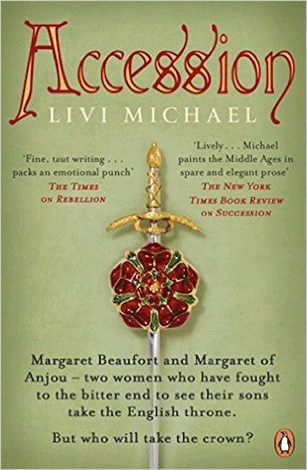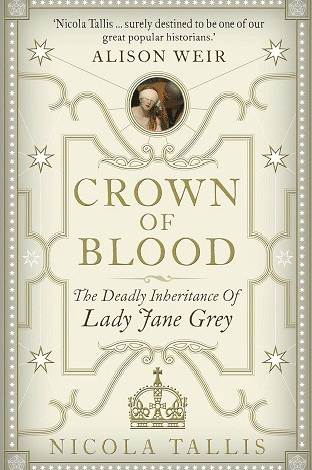Fresh from watching the ITV series Victoria, I am minded to explore the lives of England’s queens. Let’s start with Vicky. I enjoyed the telly version, prettied up as it had been to make sofa-friendly Sunday night entertainment. Once you got over expecting The Doctor to materialise, Jenna Coleman made a very credible pint-sized monarch, balancing regal manner with childish pout as the occasion demanded. There were a number of historical howlers and playing fast and loose with the record of course, and so you need something to balance it; what better than A. N. Wilson’s biography Victoria? Ideally you should have read this when the series was on, so you could smugly point out where drama swerved too widely from fact. But despair not, as there is a second series next year; plenty of time to work your way through the 575 pages. I think you may be surprised that some of the more outrageous events are a case of truth rather than fiction.
Both ITV and Wilson have cut through the myth of the unamused widow draped in black to provide a picture of a flawed woman who was probably intellectually and emotionally unsuited to be queen but who managed to become an icon for majesty. For an insight into how this myth built up, dip into Censoring Queen Victoria. Victoria wrote and wrote (if she were alive today she would have been all of a twitter) and she wrote exactly what she was thinking, without fear or favour. Unfortunately her horrified family and the public record whittled down this magnificent documentary record and we have a very bowdlerised version of Queen Victoria, which shaped our view of her for a very long time.

Accession, by Livi Michael
Remaining with royal women but jumping way back, lately I have been reading and enjoying Livi Michael’s powerfully written Accession, the third in her series following Margaret Beaufort and Margaret of Anjou (the others are Succession and Rebellion).
Michael’s style and approach is interesting, a sort of Philippa Gregory meets Polydore Vergil: she interposes fiction with direct quotes from contemporary chroniclers. So you have excerpts from the Crowland Chronicle fleshed out by the author filling in the record with the kind of emotional backstory and environmental detail we cannot possibly know, but which bring the record alive. This series focuses on two very driven women, mothers who will do anything for their sons, women who were king-makers in every sense.
I felt this was a near perfect melding of fact and fiction, but if you lean one way or the other there is on the factual side Elizabeth Norton’s study Margaret Beaufort, and on the fiction side Philippa Gregory’s hugely popular The Red Queen.
Another fascinating story is that of Lady Jane Grey, Queen for Nine Days, or rather Thirteen Days, as you will find out if you read Nicola Tallis’s new book Crown of Blood. I’m not sure that those four days made that much difference to poor Jane, but I guess if you are executed at 17 years old you have to take what you can get.

Crown of Blood, by Alison Weir
Like the Margarets before her, Jane was a woman grounded in her own personality and driven by ambitions which transcended the personal (in Jane’s case her unswerving faith in her god). Manipulated and powerless, she became a victim of ambitious men. Tallis’ portrayal perfectly delineates her inner determination and sense of self in an impossible situation. Her piety and devotion makes her an interesting and admirable character, albeit one who may not be such a chuckle on a girls’ night out.
Crown of Blood is the history, if you would like to explore fictionalised accounts try Alison Weir’s Innocent Traitor. Alison is a respected historian herself. Like in Livi’s books, some of the situations and the emotions might be conjecture but the framework is sound.
If you enjoy Innocent Traitor then go on to read Weir’s other novel about the Grey family Dangerous Inheritance, which centres on Jane’s lesser known sister Katherine. There is a bit of a leap in this one, linking Katherine with Kate Plantagenet, illegitimate daughter of Richard III, but the result is a compellingly spooky romance. And of course in a novel there is nothing we like more than a dark tower with clanking chains, a bit of ghost action and some bodice ripping. To complete the circle look at Leanda de Lisle’s The Sisters Who Would Be Queen. The extracts from Katherine’s letters show just how passionately she really did love her husband. Not that it did her any good: upset Queen Elizabeth I at your peril.
Visiting the past in fiction is tremendously enjoyable but sometimes it is also a good idea to read some real history too just to balance things out. Let us know which you prefer and do tell us of some of your favourite partners in fact and fiction.
We should not forget about Matilda.
Of course Victoria was not England’s Queen but the UK’s. Historical books are not always accurate and fiction less so. My favourite is Jeanne d’Arc, lots of books and real history but it depends on whether it is written by French or English authors as to which is more true.
Shouldn’t that first book be called “Censoring Queen Victoria” rather than “Censuring Queen Victoria”?
Though I must admit I found the latter title intriguing!
Absolutely, thank you for that we have corrected. Although one could question whether some censuring during the lifetime might have removed the need for censoring later … Thank you.